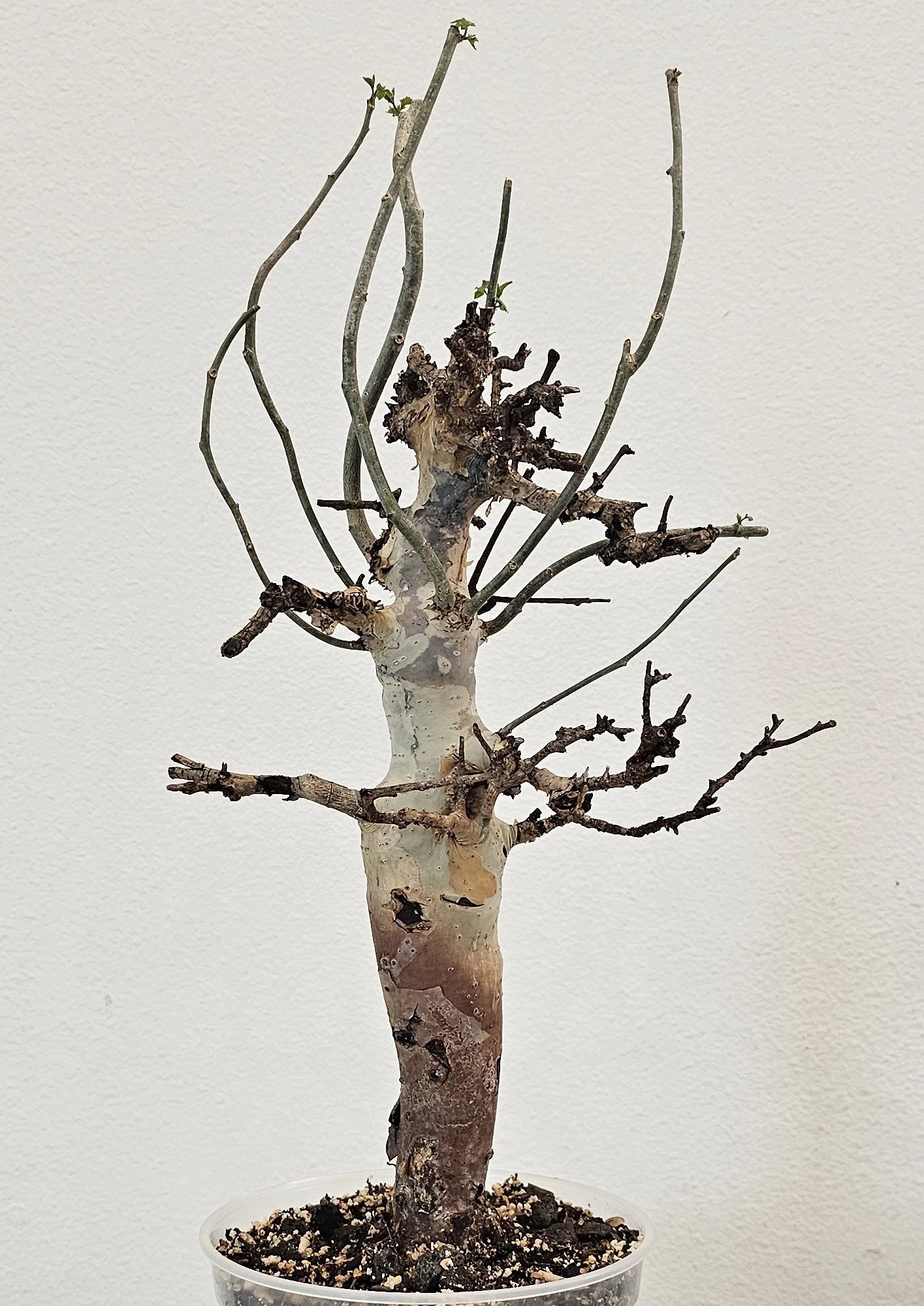🌞 Light
Full sun is essential. Give it at least 6–8 hours of strong light daily.
Indoors, place near a south-facing window or under strong grow lights.
Too little light causes weak, elongated growth and dull bark color.
💧 Watering
Extremely drought-tolerant — water sparingly.
During active growth (warm months): water only when the soil is completely dry.
In dormancy (cool or dry season): withhold water almost entirely until leaf buds reappear.
Overwatering is the main cause of death — always err on the dry side.
🌵 Soil
Requires very fast-draining, mineral-rich soil.
Ideal mix:
60–70% pumice, coarse sand, or perlite
30–40% cactus mix or gritty compost
Avoid heavy or peat-based soils that retain moisture.
🌡️ Temperature
Prefers heat: thrives between 25–35°C (77–95°F).
No frost tolerance: protect below 5°C (41°F).
Can be overwintered indoors in a bright, dry spot.
🍃 Fertilization
Apply a dilute, low-nitrogen fertilizer (e.g., cactus or succulent feed) once a month during the growing season.
Do not fertilize during dormancy.
✂️ Pruning & Growth
Naturally forms a caudex-like base and intricate branching.
Light pruning can shape it or encourage new shoots.
Growth is slow, but with age it develops a thick, sculptural trunk and attractive peeling bark.
🌱 Propagation
Best by semi-hardwood cuttings using rooting hormone and bottom heat.
Can also be grown from fresh seeds, though germination is slow and irregular.
🪴 Container Tips
Use clay or porous pots to improve airflow and drainage.
Repot only when necessary — it prefers to be slightly root-bound.
Always let the pot dry fully between waterings.
⚠️ Common Problems
Root rot: from excess moisture or poor drainage.
Leaf drop: normal in dry or dormant season; not a disease.
Pests: occasionally mealybugs or scale — treat with neem oil or systemic insecticide if needed.




































